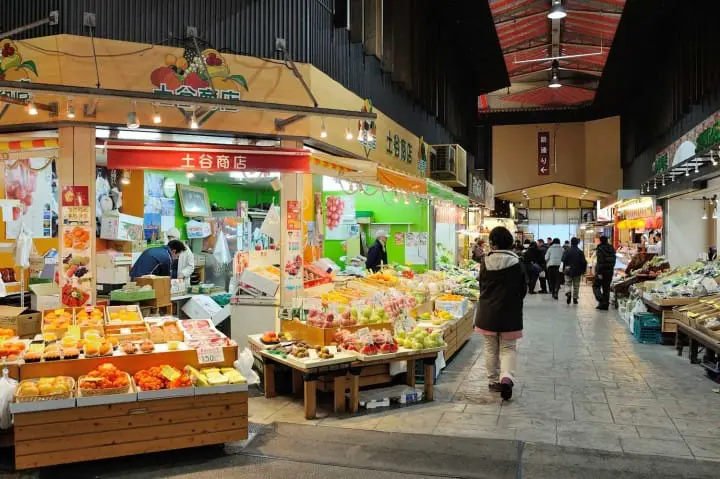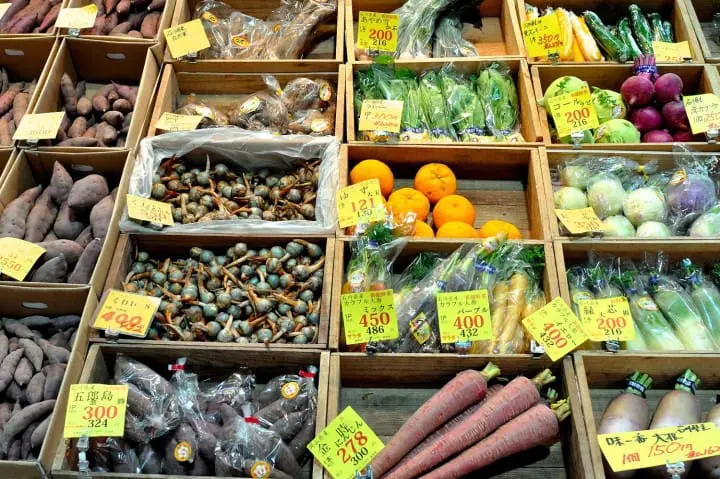A Taste Of Japan - Japanese Rice Vinegar

Japanese rice vinegar is a traditional fermented seasoning with a uniquely light and mellow taste. Made from rice by master brewers, rice vinegar is the base seasoning in many of our favorite Japanese dishes, such as sushi!
Sushi lovers may be surprised to discover that quality sushi calls for quality rice vinegar. The mild taste and crisp fragrance of Japanese rice vinegar is what creates the base seasoning in sushi rice. Add to that a little sugar and salt, and you have the perfect taste complement to the savory slice of fish sitting atop.
Japanese Rice Vinegar

Japanese rice vinegar is made from rice. The process occurs in two stages, and in the first the rice is brewed to make sake, or rice wine. The sake is what contains the needed ethanol, or alcohol, which is then converted through fermentation into acetic acid.
This is the same for all vinegar in fact. That is why red wine vinegar is brewed from red wine, and apple cider vinegar from apple cider, and so on. Without alcohol there would be no vinegar, and this is perhaps why rice vinegar is often mistaken for rice wine.
From ’shu’ 酒 (sake) to ’su’ 酢 (vinegar)

In fact the rice wine to rice vinegar relationship is evident in the written language itself, as the Japanese character for ’su’ 酢 (vinegar) is derived from 酒 (sake). This is similar to how the word “vinegar” is derived from the old French words vyn + egre (wine + sour).
To learn a bit more about Japanese rice vinegar, I thought to see if I might visit a vinegar brewery. Fortunately, I discovered one a few stations away along the local train line in Kanazawa.
Imakawa Brewery, Kanazawa

Imakawa Brewery, located in the historic temple district of Kanazawa's Teramachi, has been brewing vinegar since 1923. The brewery building itself is over 150 years old, and prior to brewing vinegar it was used exclusively for brewing sake.
Walking along the narrow streets of the district leading up to Imakawa however, it was the unmistakable fragrance of vinegar in the air that I noticed before turning the last corner.
Vinegar Shop & Gallery

A small shop awaits inside, and a gallery as well, displaying crafts and works by local artists. The stone tiled floors, wooden beams, and light from the south facing windows combine to create a lovely atmosphere for browsing.
I was especially fortunate on the day of my visit as by chance the owner had a few moments to spare, so he offered me a quick peek behind the curtains and inside the brewery walls.
Brewing Sake to Make Vinegar

Sake in Japan is typically brewed during midwinter, as the cool ambient temperatures are needed in maintaining the ideal conditions for fermentation. One of the first steps in brewing is to steam the rice which had been just harvested during the early autumn.
If visitors to Japan are hoping to tour a sake or vinegar brewery, midwinter would be the best time as brewing operations are in full swing. However, please keep in mind that visits may be limited depending on the brewery, as things are certainly at their busiest.
Traditional Fermentation

Imakawa vinegar is fermented using traditional methods, and so is dependent upon the natural surrounding environment. Acetic acid bacteria are the fermenting agent and are applied to the finished sake. Fermentation occurs over a period of four months during which the temperature and aeration of the tank contents are maintained fastidiously by hand.
Modern methods of brewing vinegar require as few as three days from start to finish. It’s not difficult to imagine then as to why the traditional method is unfortunately becoming less and less common.
Types of Rice Vinegar

Japanese rice vinegar is noticeably mild in taste when compared to others, such as malt, or balsamic vinegar. This is due to its relatively low 4-5% acidity, as compared to the more common 6-8% acidity, or even higher. This difference at first glance may not seem as impressive, but when it comes to the taste, it's strikingly noticeable.
Imakawa offers a variety of rice vinegar based upon the type of rice used, or added seasonings. I thought to try out two at home, and so, thanking the owner for the insightful tour, I then departed for my next stop, Omicho Fish Market, located in central Kanazawa.
Omicho Fish Market, Kanazawa

It was time for dinner planning, so catching the bus I stepped off a few stops later at Omicho Market. With its beginnings as a morning market some 300 years ago, Omicho today is a sprawling marketplace with close to 200 shops selling an incredible variety of fresh, dried, and fermented seafood and produce.
Tips for Visiting Omicho

One tip if visitors are looking to avoid the crowds is to plan a visit during the late afternoon. Although some of the stalls may have less goods on display, the market itself is far more pleasant for strolling and browsing. And better yet, if you have access to a kitchen during your stay you’ll find the best bargains of the day, as vendors look to clear out their fish at discounted prices to make room for the next morning’s deliveries.
Japanese Traditional Vegetables

I’ve been here in Japan for close to ten years now, and I still can’t name all of my vegetables in English, let alone in Japanese. However, I do know a few and always keep them in mind, as when cooking for the family I try and abide by a key rule of healthful eating - Don't forget your dietary fibers!
The good news is that rice vinegar makes for an excellent seasoning when it comes to cooking with vegetables.

Gobo (burdock) and renkon (lotus root) are both root vegetables, and are cultivated locally. They’re often promoted as traditional vegetables, a term which carries with it a few meanings, some of which I’ve taken to heart. In this case, I do tend to stick with traditional seasonings when cooking, such as mirin (Japanese cooking wine) or soy sauce, as opposed to for example, mayonnaise.
Now mayonnaise is one of those seasonings which I believe makes almost anything taste good. And, although I have tried recipes using mayonnaise, I find that in the end it's the traditional seasonings that won’t steer me wrong.
Sunomono - A Vinegar Marinade

I also picked up some fresh wakame (seaweed) and steamed fry for which I'd planned a simple seasoning of rice vinegar with touches of soy sauce, mirin, and dashi (Japanese cooking stock). This vinegar based seasoning is often used with a variety of different raw seafood, seaweed, and vegetables, and is referred to commonly as sunomono.
Rice vinegar is relatively mild in taste, but as a seasoning, any vinegar can certainly hold its own. In cooking, this often means less salt and less sugar, which I think tends to be a win for everyone when it comes to healthful eating. Or, looking at it less paternally, less salt here means room for more salt somewhere else!
Light and Savory!

Light in taste and pleasingly savory, the rice vinegar combined with other seasonings works wonders in complementing the deep rich flavor of the gobo and renkon. It was the sunomono dish, though, that was hands down the favorite at the family dinner table that evening (and, the next morning's breakfast table as well!).
In Closing
On your visit to Japan treat your taste buds to the taste of Japanese rice vinegar. From sushi to sunomono, pickles, and other dishes, rice vinegar is used in a wide variety of dishes. Plus, why not try your hand at a Japanese cooking class, and learn for yourself the wonders of vinegar when combined with other traditional Japanese seasonings. You may even find yourself afterward with a few bottles of your own to take back home!
Living in Fukuoka City, interested in travel, food, and fashion. Dream destination is Finland to see the Northern Lights.


































![[Coupon Available] Attention Overseas Winter Sports Fans! Nagano's Sports Depot Has Evolved](https://resources.matcha-jp.com/resize/720x2000/2026/01/05-254819.webp)
![[2 hours from Tokyo ] 10 Quiet and Breathtaking Views of Mount Fuji in Yamanashi Hokuto City , Yamanashi - Part 2](https://resources.matcha-jp.com/resize/720x2000/2025/12/16-253037.webp)

![[Reopening in March 2026] Ikoma Sanjo Amusement Park Park, 45 minutes from Osaka , with free admission](https://resources.matcha-jp.com/resize/720x2000/2024/08/28-194409.webp)